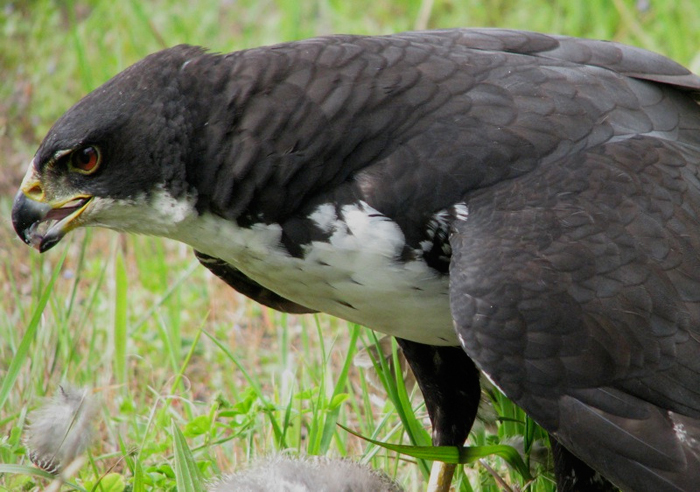UCT ecologists harness the power of Google Images for research
16 May 2016 | Story by Newsroom
A group of UCT researchers has found that animals caught on camera by amateur photographers and posted on the web are a useful tool for studying evolution and other ecological questions. Their study – the first of its kind – was published in Methods in Ecology and Evolution.
Dr Arjun Amar and his student Gabriella Leighton, both in the Department of Biological Sciences at UCT, were looking into the topic of colour polymorphism – where a single species has two or more colour types.
Because the fieldwork required to collect this data is time consuming and expensive, they wondered if they could use the thousands of animal images posted on the internet instead.
Using Google Images, they gathered 4 800 photographs of four animal species with known colour variations: the black sparrowhawk in South Africa, the black bear in western North America, the barn owl worldwide and the hooded or carrion crow in Europe. The black sparrowhawk, for instance, is either completely dark or has a white chest.
Amar explains: “We selected these species because accurate scientific data already exists on the distribution of their different colour morphs, allowing us to compare and assess the accuracy of our new method based on Google Images.”
Their research proved that this method could produce results that were as accurate as fieldwork.
Free app
But handling and scoring so many images was logistically challenging, so they teamed up with UCT computer scientist Pierre Hugo. He developed a custom web application called Morphic, which allows the data to be collected more efficiently.
Leighton says: “Very pleasingly, the method worked: we were able to create a map of the different colour varieties and, most importantly, the pattern of this map matched very well the known pattern of the colour varieties. And whereas our data took only days or weeks to collate from my office, these other data had often taken years of labour-intensive fieldwork or visits to museums worldwide.”
The new technique opens up a world of possibilities for ecologists looking at topics ranging from migration patterns to the age structures of animal populations in different areas. It works best when species are easy to recognise and categorise, particularly if they are very well photographed.
Says Amar: “When we describe our method, other researchers always come up with different ideas for their own study system, so we hope they will use it to answer questions of their own that we haven't even imagined. We have made the web application freely available and can't wait to see what others come up with.”
And if more photographers geo-tag their images with location and dates, their pictures could be even more valuable for ecology in the future.
Photo David Berliner via Flickr under Creative Commons licence.
 This work is licensed under a Creative Commons Attribution-NoDerivatives 4.0 International License.
This work is licensed under a Creative Commons Attribution-NoDerivatives 4.0 International License.
Please view the republishing articles page for more information.










